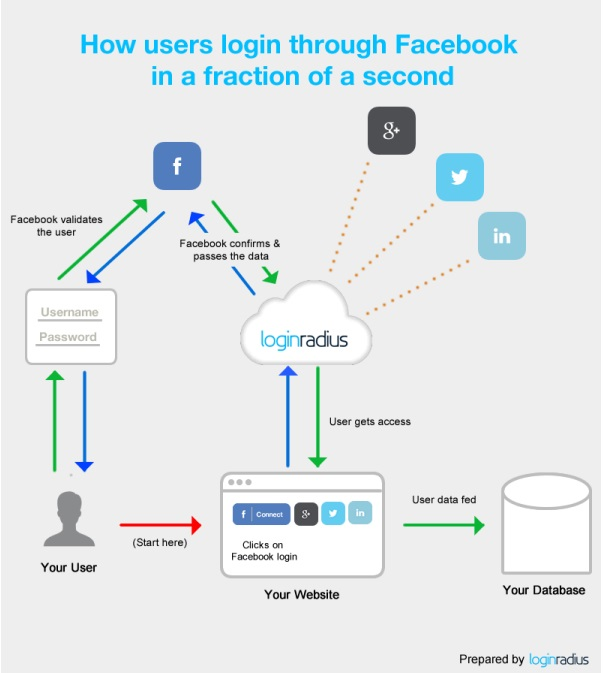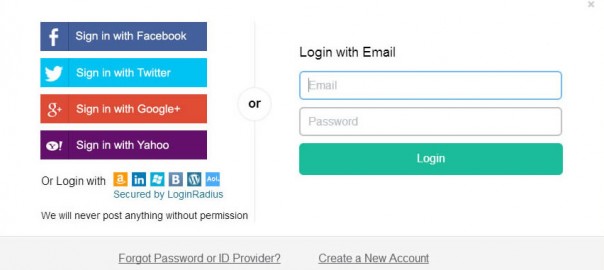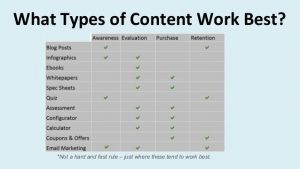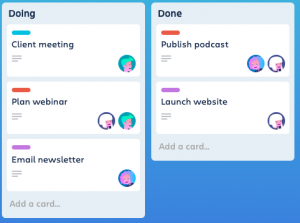Remember when news media started migrating onto the Internet and everyone lost their minds proclaiming the “death” of the written word? Apparently the invention of the Internet meant no one in the world would ever want to read in print again, and most publishers wouldn’t survive the dark waters of online expression.

Feels like a distant memory, doesn’t it?
Nowadays, the first place people go for their daily news fix is the internet, usually via their smart device, and according to Pew Research Center, “50% of the public now cites the Internet as a main source for national and international news.”
But hey, you already know all of this because a) you’re in the industry and b) you probably check for news updates on your Twitter more than you’d like to admit. So the real issue facing online publishers now isn’t about surviving online, it’s about community building online, fostering an environment where users return again and again.
But how do you make that happen?
Hold on, we’ll get to that.
First, it’s worth noting that at this point, when someone visits a news site, they are expecting to be able to use their existing social media profiles to log in or register. You already know that if headlines don’t grab attention within 3 seconds, you’ve lost that reader. The same exact thing happens when users visit your site and are hindered by exhaustive registration processes. Engagement hits a brick wall when users are “forced” to sign up.
Pew Research also found that, “Visitors who go to a news media website directly spend roughly three times as long as those who wind up there through search or Facebook, and they view roughly five times as many pages per month. This higher level of engagement from direct visitors is evident whether a site’s traffic is driven by search or social sharing.”
So what can you do to keep those users who arrive directly on the page and registering? You need to make the process as easy as humanly possible, ideally 2-4 clicks, to sign up, comment, or view more content. Social login is exactly what online publishers need to solve this issue.
4 Awesome Ways Social Login Helps Online Publishers:
- Makes the sign-up process seamless, which increases the likelihood of registration.
- Time-on-site increases which means users view more content, leading to increased conversations, and keeps content circulating.
- Utilizes doubleclick for online publishers (DPF) because social data collection contributes to serving users relevant ads automatically, making them more targeted.
- Fosters community building as ease of registration and social data points keep the users coming back and engaging with content (commenting, sharing, favoriting).
*No time? Check out our Recap at the bottom of the article.
News Media, Social Media, And Social Login
News and social media are interconnected. Like we said, one of the first places people go to find the latest news are their social media accounts, like Twitter and Facebook, to get live and real-time updates. Users search through their feeds, scour the headlines, and click through to news sites to read up on breaking news.
We’ve mentioned this before, but “about 90% of users will go to another website rather than go through the process of retrieving their passwords, and beyond that, more than 50% of users will leave your website rather than going through the registration process.”
Social login creates a bridge between the referral traffic that comes to news websites and an online publisher’s ability to connect with those users, without having them leave the site altogether.

Pretty straight forward, right? Basically, social login can be the driving force to turn your one-sided news and publishing website into a thriving news hub with dynamic two way conversation and dialogue. People want to add their two-cents and have their say—they want to be involved in the conversation, share their opinions, read the opinions of other users, have the ability to share news, and they want to use social media to do it.
Let’s Break It Down: What Is Social Login And How Does It Work?
Social login allows users to register and sign in using their existing social media accounts. The can login using Facebook, Twitter, LinkedIn, or any other preferred social media profiles—in most cases they will want to login in using the social media account they used when they clicked through to your website in the first place. This simplifies the login process and makes it easier for users to interact with your website.
Implementing social login doesn’t mean you have to abandon your current user registration process. Rather, including social login gives users options for how they want to log in, interact, and consume content on your website.
Current Examples Of Social Login In News Media
SportsNet
Sportsnet.ca provides users with a variety of ways to log in, allowing users to choose the method they prefer.
The Huffington Post not only gives users a number of social login options, they also tell users why they should log in.
The Guardian also offers social, email, and traditional registration options, the only difference is they keep their social media options extremely targeted to their users’ preference.

Alaska Dispatch News
Clearly, there’s a trend happening here, combining traditional registration with social login properties.
Without getting too technical, here is how social login works:
- A user chooses to register on your website using their existing social account.
- The user’s social account ID is verified by the network chosen.
- The social network uses REST API to connect services.
- Login details are verified.
- Users are granted access to your website via their social media profile.
- System creates a user profile for you and stores data in your website database.
Here is an example of what users will see when they login using their Facebook account:
From the user’s perspective, all they do is click the social account they want to log in with, accept the terms, and they can interact with your site. It literally takes a few seconds!
Check out this infographic which outlines the process when a user logs in with Facebook:
 Social Login For Commenting On News Media Sites
Social Login For Commenting On News Media Sites
If social login’s main function for online publishers is to make it easy for users to access their website, using social login for commenting is a close second. One of the hallmarks of a good news site is the number of comments its content generates. Turning readers into actively engaged users is the goal, and it’s essential to make commenting as easy as possible for users.
Users tend to comment on impulse and in reaction to the news stories they are reading. Forcing them to log in at the moment they connect with what they are reading, especially if they don’t have an account with your website, will reduce the chances of users commenting. Even if they do have an account, the odds of them remembering their username and password are not great.
Social login allows users to quickly comment on the story they are reading, boosting the levels of engagement on your website. It also makes it easier for users to share your stories on their social media profiles and engage with other users, all things that can help get more eyes on your content.
Let’s use the Globe and Mail as an example to illustrate the benefit of having social login for commenting.
The User’s View If They Are Not Logged In:

Registering for an account, filling out sign up forms, verifying via email:

Logging in using social login:

Social login simplifies the process for users. Rather than having to fill out sign up forms, all they need to do is click the social media account they want to sign in with, accept the terms, and then add their comment.
4 Ways News And Media Sites Are Using Social Login
- Accelerating and simplifying the signup process: Social login solves registration friction and users will be more willing to engage with your site when you make registration as simple and pain free as possible.
- Data collection: It allows you to collect user data, such as email, location, gender, and age, which is information you can use to learn more about your users. You can then retarget ads to cater to content that your users want to see, improve user experience, and generate more targeted content. How many John Smiths do you have in your database?
- Spam reduction: Since social networks authenticate users when they create an account, it helps to reduce fake accounts and spam bots from accessing your website and spamming your comments section.
- Photo integration: Social login allows you to import user photos from their social media profile into your system as part of the login process.
Recap! 10 Ways Online Publishers Benefit From Social Login
- Increase time on site through user engagement.
- Increase conversion rates.
- Increase the number of return visitors to your news and media site.
- Increase access to reliable consumer data.
- Increase engaged referral traffic through social sharing.
- Improve click through rates with social data and doubleclick for publishers (DPF).
- Increase the volume of comments on content.
- Increase the quality of comments by reducing spam.
- Improve user experience by making it easier for users to log in, navigate, and interact.
- Gain the trust of your users and continue community building within your site.
The benefits for you lead to one significant benefit for your users—a much better and personalized user experience. Social login helps bridge the gap with your user engagement and makes the transition from external traffic sources quick and easy.
Conclusion
While exceptional content is the focal point for most online publishers, the key to growth and becoming recognized as an industry leader is user engagement and community building. Social login can have a big impact on your news and media site. It can help improve access to your content, make it easier to interact, and give your users a more personalized experience.
(525)















